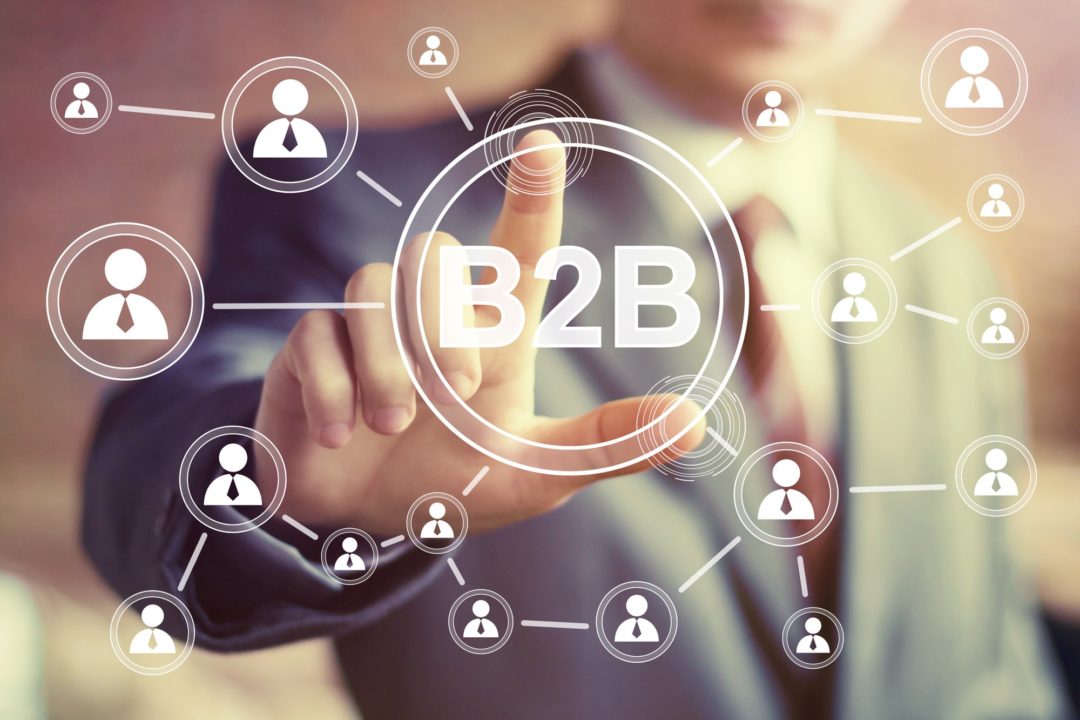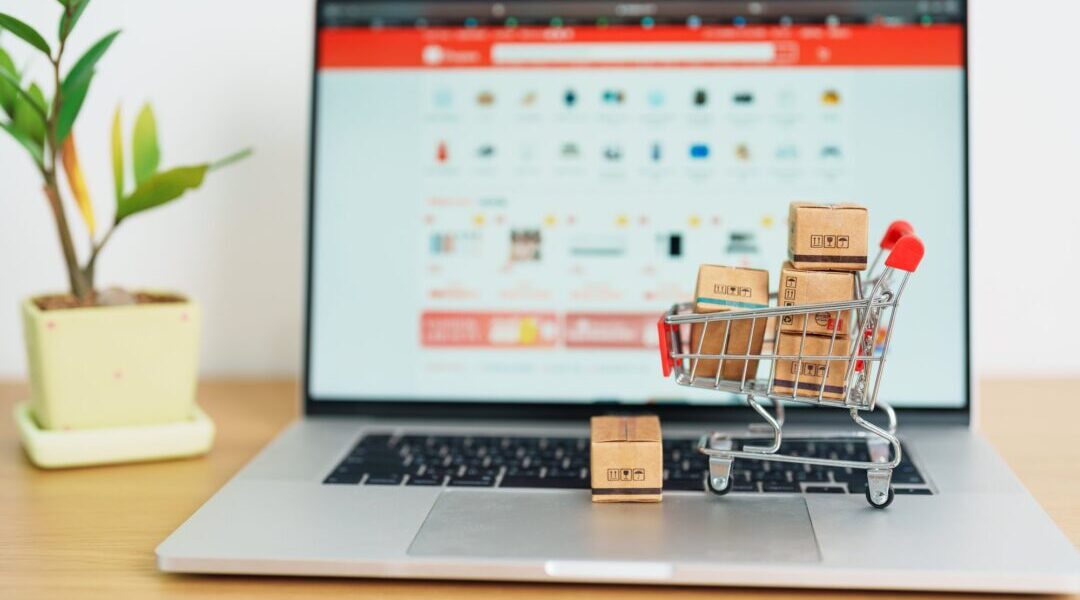The constraints of the COVID-19 pandemic have pushed B2B businesses away from the usual conferences, trade shows, and face-to-face meetings to online sales solutions. While B2C eCommerce has long been commonplace, B2B commerce has just started reaping the benefits of eCommerce.
According to Gartner, nearly 61% of B2B business owners say that they’re spending more or significantly more money on technology. The reason for this is simple—more B2B buyers are now heading online to make their purchases.
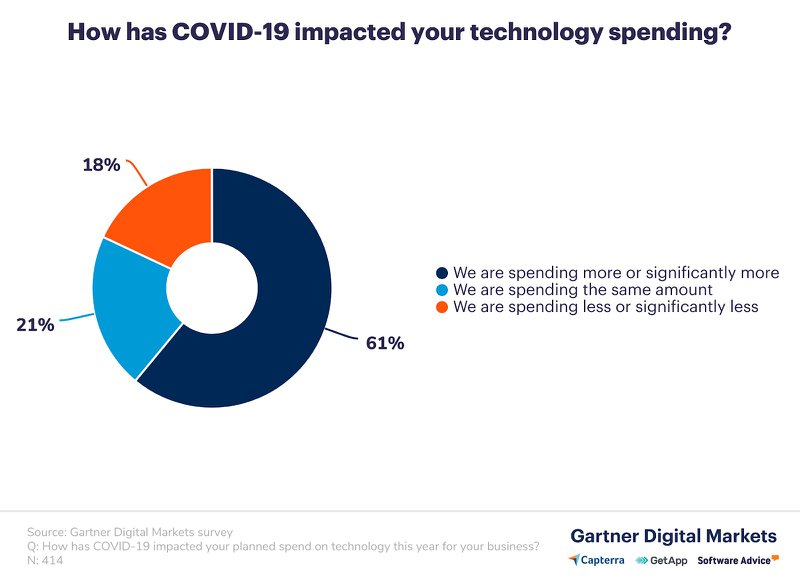
More than just being a logistical necessity, the move to eCommerce allows for some serious benefits that are only possible in the online space. These include improving customer experience by capitalizing on mobile technology and appealing to younger buyer demographics.
Let’s have a look at the emerging B2B commerce trends more in-depth.
Upcoming B2B Commerce Trends
More people are going online than ever before to shop. This not only applies to B2C businesses but also B2B companies. In fact, according to Mirakl, 73% of B2B buyers now use digital channels like eCommerce platforms for their purchasing needs. As such, new trends in B2B commerce are coming to the forefront.
1. Mobile Adoption of B2B eCommerce
Mobile devices have quickly become the go-to destinations for browsing and purchasing. Indeed, nearly 51% of all the web traffic from around the world comes from mobile devices.
So it’s essential to ensure that your websites are ready for easy mobile access. Clunky, slow-loading sites that require the user to constantly resize the page to try to get important product information is a sure-fire way to lose mobile customers.
Mobile-Friendly Design
It is best to adopt a mobile-first designing approach where you develop the website first for mobile devices and then scale it up for larger screens. This approach ensures that the website will appear perfectly on all screen sizes.
Alternatively, you can choose to go for a responsive design where the elements will resize themselves based on the size of the screen. This can help make the browsing experience of your B2B eCommerce website smoother.
This is also important from an SEO perspective as Google is moving to mobile-first indexing. So if your website isn’t mobile-friendly, you might lose out on your rankings in the search engine results as well.
Once you’ve implemented your design, you can check if it’s mobile-friendly by leveraging the Mobile-Friendly Test provided by Google.
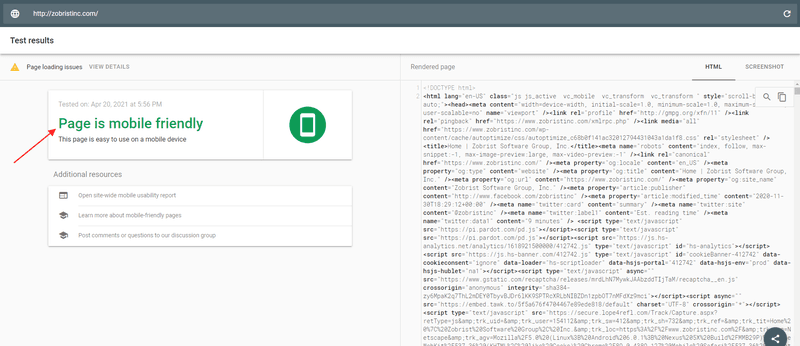
Website Loading Speed
Apart from designing your website for mobile access, you also need to ensure that it loads quickly. Buyers, especially B2B buyers, are often pressed for time and if your website doesn’t load quickly, they may bounce away and head to your competitors.
In fact, the website’s loading speed is so important that mobile site speed improvements can directly improve your sales funnel’s effectiveness.
When the mobile page speed improves, there’s also an increase in the number of page views, conversion rates, and the average order value.
The most surprising part here, though, is that all of these improvements were noticed when the page loading speed improved by just 0.1 seconds.
Additionally, a fast-loading website also improves the page experience and this can boost your website’s SEO as well. Google has introduced page experience as one of its ranking parameters, meaning you have to ensure that your website loads quickly and satisfies the criteria established for the three Core Web Vitals.
To check your website’s page loading speed, you can head to Google PageSpeed Insights. Alternatively, you can also use web.dev to check on the same. Google Search Console, too, will help you get a detailed look into your website’s page experience so that you can optimize your site as needed.
2. Low Code/No-Code Applications and PWA
Yet another upcoming trend in B2B commerce is that of low code and no-code applications. And there is a new generation of applications such as progressive web apps (PWAs), which are web applications that are built using common technologies like HTML and JavaScript.
Essentially, PWAs use web browsers but behave like mobile apps, even though they aren’t really native apps.
Buyers just need to open the apps and they’ll be directed to the respective eCommerce website. What makes it even better is the fact that PWAs aren’t downloaded on the phone. Instead of taking up precious storage space they just appear on the home screen. This makes them a win-win for both buyers and sellers.
Additionally, being low code or no-code applications, business owners can seamlessly implement them on their websites. If you’re a WordPress website owner, you can even leverage plugins for the same.
There are numerous low-code and no-code platforms out there such as Volt MX, Appy Pie, Zoho Creator, etc. that help businesses create new apps from scratch.
These platforms open up a wide range of opportunities for B2B commerce as numerous business owners may be more willing to try them.
3. Marketplaces
Marketplaces tend to be among the most popular platforms for making purchases.
In fact, according to the previously mentioned report by Mirakl, about 87% of business buyers across all age ranges are making purchases from online marketplaces. This makes marketplaces most used when ranked against all other modes of buying, including the traditional tender process.
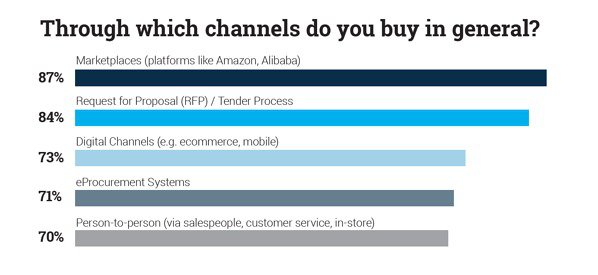
While prominent marketplaces like Amazon, eBay, Alibaba are all very popular, they’re generic and cater to multiple niches. However, the next big trend in B2B commerce is that of vertical marketplaces.
These marketplaces concentrate on providing niche products or services and are aimed at a single sector, unlike the others which are horizontal marketplaces.
According to Pete Wharton, the Director of Marketing, Commerce at HCL Software, the most exciting possibility with vertical marketplaces is creating one yourself and then inviting the others to sell on it. This makes your marketplace the destination for a given industry or sector driving more traffic and customers to you.
4. Buyers Are Changing
Historically, the buyer base for B2B businesses has consisted largely of baby boomers and Generation X. But more and more millennials and Generation Z are taking positions in management and purchasing.
Accustomed to eCommerce experiences in B2C transactions, these younger buyers expect a technologically based, mobile-optimized, and customer-centric experience. Keeping this shifting demographic in mind when crafting your eCommerce presence is essential.
Additionally, implementing more digital marketing campaigns to reach your customers is a good idea.
5. Fulfilment Options
The pandemic has also altered fulfillment. Numerous alternative fulfillment options are in use such as buy online and pick up in-store (BOPIS). These other options are meant to reduce physical contact during the buying process.
B2B companies can approach retail partners and leverage such fulfillment options as well. Additionally, you could start implementing other fulfillment options like drop-shipping and direct deliveries instead of only offering traditional fulfillment methods.
6. New Payment Methods
The transition to eCommerce requires brands to accept payments online and move away from physical invoicing. Additionally, B2B orders are often large and expensive, which may require financing in some cases.
It’s necessary to stay informed of new payment processing platforms and to understand how they might work for your business. While B2C eCommerce has been doing this for quite a few years now, B2B businesses should also prioritize this as well.
Final Thoughts
The year 2020 marked a significant shift in the way B2B commerce was conducted. From more traditional sales methods, B2B businesses were forced to move online and set up eCommerce stores and invest in digital marketing.
As a result, there are numerous trends that are emerging. These include the increased adoption of mobiles for buying products and services from B2B businesses.
Also, PWAs and low-code/no-code applications are becoming more popular and it’s expected that this will continue in the near future too.
Additionally, vertical marketplaces are going to become more commonplace alongside the horizontal marketplaces that are already present. Finally, the B2B audience is changing and that’s pushing brands to go the digital way too. In the process, the fulfillment and payment options for B2B sales are undergoing a change as well.
Do you want to learn more about the B2B commerce trends mentioned above? Incidentally, they are OOTB (Out-Of-The-Box) with HCL Commerce. Check out this insightful interaction between Teresa Zobrist (Zobrist Inc.) and Peter Wharton (HCL Commerce).

